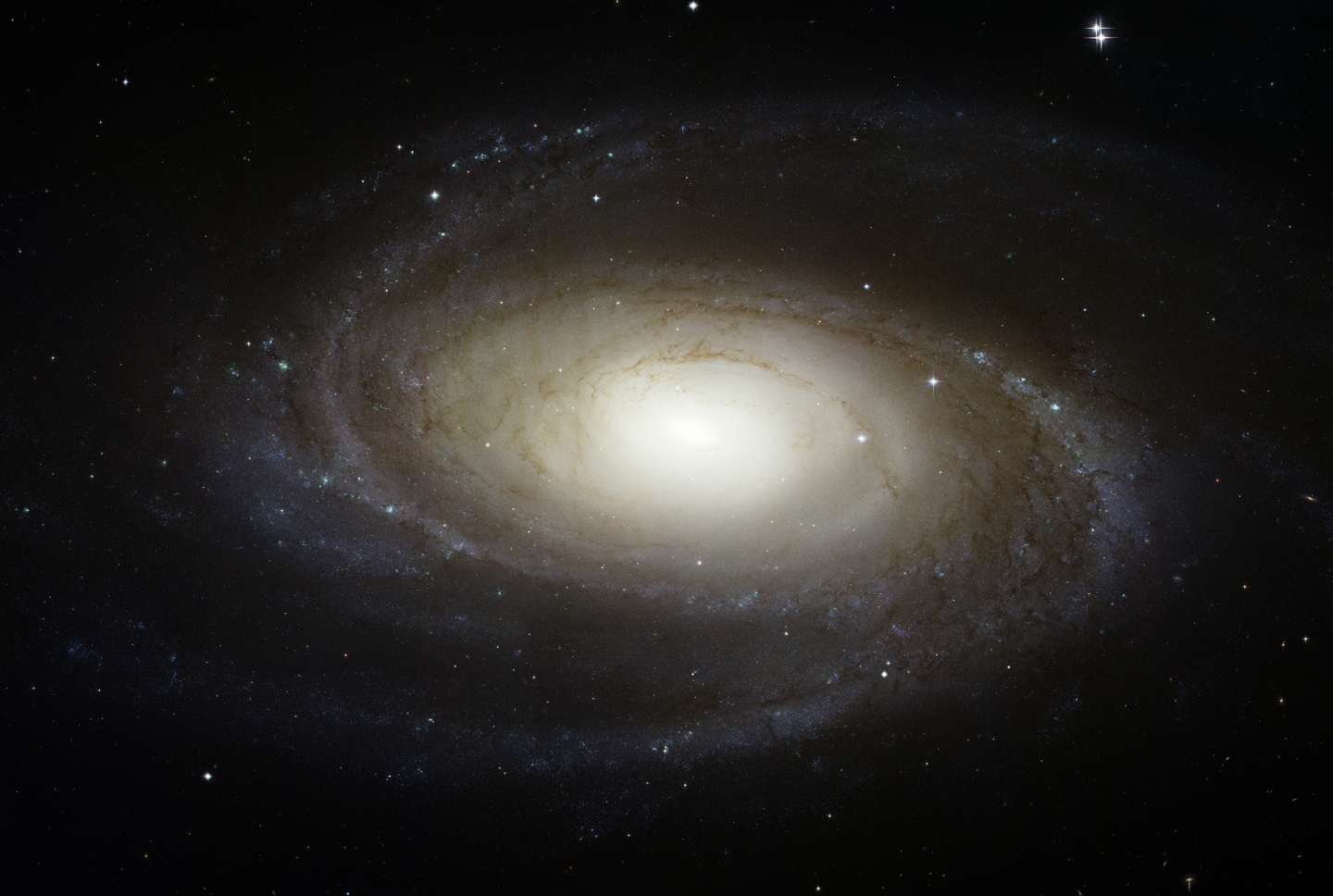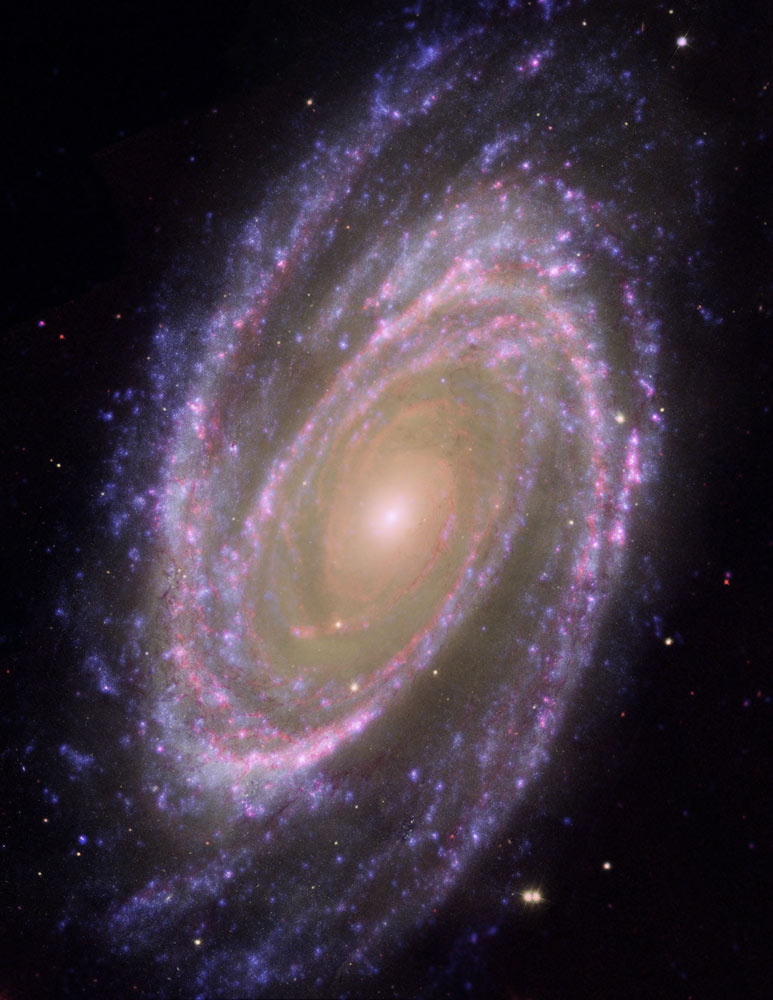Image List
-

This new image of the nearby spiral galaxy Messier 81, taken by NASA's Hubble Space Telescope, shows stunning detail in a galaxy that resembles the Milky Way in many ways. This color composite was assembled from images taken in blue, visible, and infrared light.
NASA, ESA, and the Hubble Heritage Team (STScI/AURA) -

This image combines data from the Hubble Space Telescope, the Spitzer Space Telescope and the Galaxy Evolution Explorer (GALEX) missions. The GALEX ultraviolet data were from the far-ultraviolet portion of the spectrum (135 to 175 nanometers). The Spitzer infrared data were taken at a wavelength of 8 microns. The Hubble data were taken at the blue portion of the spectrum.
Hubble data: NASA, ESA, and A. Zezas (CfA); GALEX data: NASA, JPL-Caltech, GALEX Team, J. Huchra et al. (CfA); Spitzer data: NASA/JPL/Caltech/CfA -
![[Left] The inner bulge and nucleus of M81 are relatively structure-free, except for fine dust lanes that wind into the center. Several whitish-colored concentrations of stars, known as globular clusters are easily visible. [Middle] A string of star-forming regions show along a spiral arm. Their glowing hydrogen gas appears green in color. A denser concentration of dust is visible along the arms. [Right] Interspersed within the active spiral arms are areas of new star formation. Here, associations of hot blue stars have formed. These massive stars' lifetimes are relatively short compared to the overall age of the galaxy. Their inevitable death will help to enrich the surrounding area with heavier elements.](/sites/default/files/associated_media/base_504.jpg)
[Left] The inner bulge and nucleus of M81 are relatively structure-free, except for fine dust lanes that wind into the center. Several whitish-colored concentrations of stars, known as globular clusters are easily visible.
[Middle] A string of star-forming regions show along a spiral arm. Their glowing hydrogen gas appears green in color. A denser concentration of dust is visible along the arms.
[Right] Interspersed within the active spiral arms are areas of new star formation. Here, associations of hot blue stars have formed. These massive stars' lifetimes are relatively short compared to the overall age of the galaxy. Their inevitable death will help to enrich the surrounding area with heavier elements.
NASA, ESA, A. Zezas and J. Huchra (CfA)